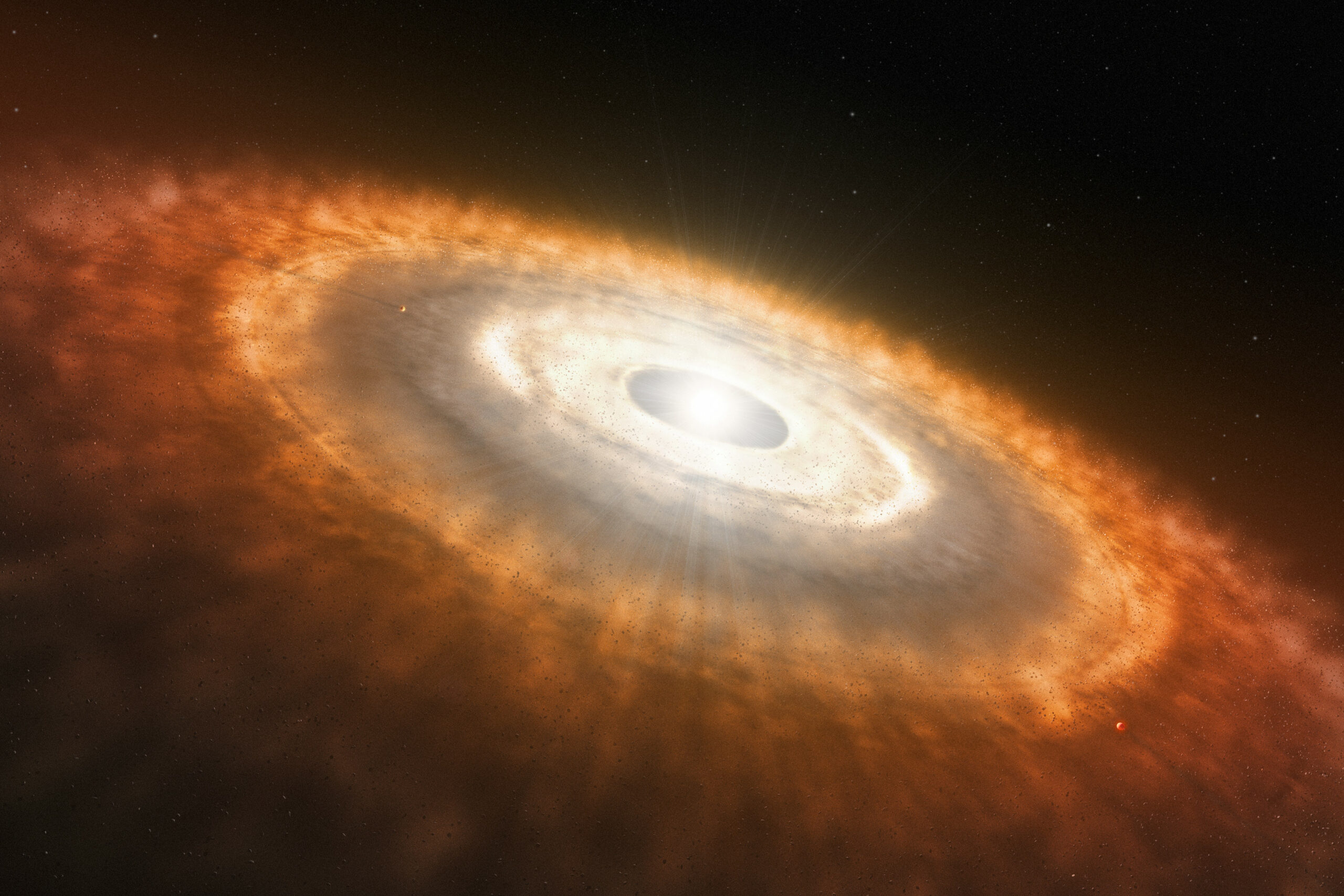The solar system – a crash birth
About 4.5 billion years ago, a large cloud of gas and dust collapsed where the solar system is today. Everything that makes up our sun, the planets, moons, asteroids and other celestial bodies in the solar system comes from this cloud. As an international team of researchers led by planetologists from the University of Münster has now discovered, the formation of the entire system took a surprisingly short time: only 200,000 years.
The first solids that formed in the solar system can now be found as micrometer to centimeter-sized inclusions in meteorites. The so-called calcium- and aluminum-rich inclusions (CAIs) provide a direct record of the formation of the solar system. Most CAIs formed 4.567 billion years ago, over a period of about 40,000 to 200,000 years.
“Since the observed time span of stellar accretion (1-2 million years) is much longer than the formation of CAIs, the question arose as to which astronomical phase in the formation of the solar system is captured by the formation of the CAIs, and ultimately, how fast the material of which the solar system is composed was accreted”, says cosmochemist Dr. Greg Brennecka from the Lawrence Livermore National Laboratory in California, who previously worked at the University of Münster in the group of Prof. Dr. Thorsten Kleine. The study shows that the vast majority of the material that makes up the Sun and the solar system accreted rapidly, while at the same time the oldest dated solids were formed in less than 200,000 years.
The research team measured the isotopic and trace element compositions of molybdenum (Mo) in a variety of CAIs taken from carbonaceous chondrite meteorites. “We found that the different Mo isotope compositions of the CAIs cover essentially the entire range of the protoplanetary disk material. In other words, the CAIs possibly record the entire history from the molecular cloud to the Sun,” explains Thorsten Kleine from the Institute of Planetology.
And since scientists know when and how long it took for CAIs to form, this offers a way of dating the Sun’s accretion. If one transfers the speed of birth of the solar system to the life phases of humans, this means, so the researchers, that the entire pregnancy would last only about twelve hours instead of nine months. The process was therefore virtually rapid on an astronomical scale.
